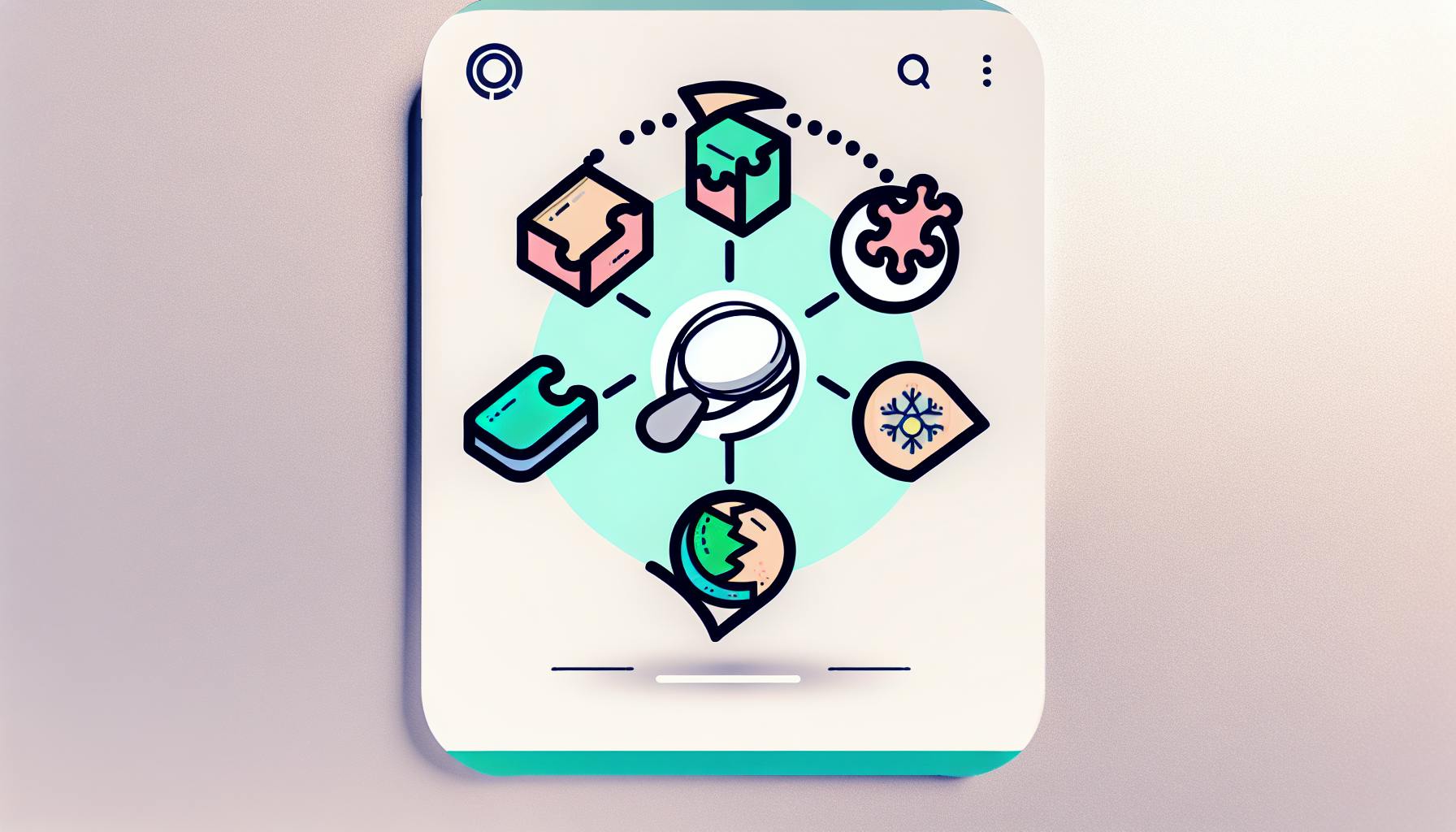If you're diving into mobile app development, grasping the 5 Clean Architecture Principles can set you up for success. Here's a quick rundown to get you started:
These principles help in building robust, adaptable, and maintainable mobile applications, crucial for both developers and businesses alike.
1. Separation of Concerns
The first big idea in clean architecture is called separation of concerns (SoC). This is just a fancy way of saying we should organize an app's code into clear, separate parts, each with its own job. Imagine you're organizing a toolbox - you wouldn't mix up screws with hammers, right? It's kind of like that.
Why it's good:
For mobile apps, the parts usually look like this:
By keeping these parts separate, apps are easier to handle, update, and make work across different devices. It might take a bit more time at the start, but it makes life easier in the long run, especially when you need to fix or change things.
2. Dependency Rule
The dependency rule is a big deal in clean architecture. It's like saying the core parts of your app (the main jobs it does) shouldn't need to know about the outer parts (like how it looks or where it stores data).
What's the big idea?
Think of your app as a target with rings. The middle (or domain) is where the app's main jobs are. The outer rings are things like the app's look or where it keeps data. The inside can be used by the outside, but not the other way around. This keeps the core jobs independent.
Why do it?
Making it work in mobile apps
By sticking to this rule, you make your app stronger and ready for changes. It might seem like extra work at first, but it saves a lot of trouble later on!
3. Abstraction Principle
The idea of abstraction is like making a clean, easy-to-follow map for how different parts of your app talk to each other. It's about keeping things simple and not letting them get all tangled up.
Why go for abstraction?
How to use abstraction in mobile apps
Here’s how to put abstraction to work in your mobile app:
Taking a little time to think about abstraction can make a big difference. It leads to apps that are easier to handle, update, and test. Plus, it sets you up for success as mobile technology keeps changing. It’s all about building a solid foundation for your app.
4. Domain-Driven Design
Domain-driven design (DDD) is a smart way to make mobile apps that really understand and fit into the business world. It's about making sure your app can handle complex business stuff by modeling it in a way that matches the real world.
Why go for DDD?
Putting DDD into practice
Here's how you can use DDD when making mobile apps:
Going with DDD from the start means more work at the beginning, but it leads to apps that really fit with business needs. Plus, it helps the app grow and change with the business over time.
5. Testability
Making your app easy to test is super important. It helps you make sure everything works like it's supposed to and find any issues quickly.
Here's how you can make your mobile app easier to test:
Keep the main app logic separate
Dependency injection
Facade pattern
Testing async logic
UI testing
Fast feedback
By focusing on these areas, you're building your app with testing in mind from the start. This approach helps you spot and fix issues quickly, ensuring your app is solid and reliable.
Separation of Concerns
Separation of concerns (SoC) is all about dividing up the work in an app so that each part does its own thing without stepping on the toes of the others. When you're making mobile apps, this principle helps a lot:
Overview
Think of SoC as organizing your app into neat little boxes, each with its own job:
Keeping these parts separate means the code is:
Starting with SoC makes it easier to handle changes and growth in your app.
Application in Mobile Development
For mobile apps on iOS, Android, and Flutter, SoC helps with:
Loosely-coupled architecture
Reusable business logic
Working together smoothly
Testing made easy
Keeping features tidy
Freshening up the look
By sticking to SoC from the start, you're setting up your app to be cleaner and more flexible, ready to grow and change as needed.
Dependency Rule
Overview
Imagine the parts of your app as a stack of pancakes. The bottom pancake (your app's core logic) shouldn't have to worry about what's on top (like the syrup or strawberries, which are the UI and database). This is what the dependency rule is all about. It keeps the core of your app safe and sound, no matter what changes on the outside.
Here's why this is cool:
In short, this rule helps keep your app easy to handle, even as it grows or changes.
Application in Mobile Development
When building mobile apps, here's how this rule makes things better:
Domain Layer Independence
The core part of your app, where all the big decisions happen, doesn't get tangled up with other stuff. This keeps it clean and easy to use elsewhere.
Abstraction
The core part talks to the rest of the app through a kind of secret code, so it doesn't need to know the details.
Repository Pattern
There's a middleman that handles all the chatter between the app's brain and where it keeps its data. This way, the brain doesn't need to know where the data is.
Dependency Injection
The app's parts get what they need handed to them, rather than having to go find it themselves. This keeps things flexible.
Uni-directional Data Flow
Information moves in just one direction, from the core outwards. This keeps the core clean.
By sticking to these ideas, you make an app that's easier to grow, fix, and understand. It's a bit of work upfront but makes life much easier down the line.
Abstraction Principle
Overview
The Abstraction Principle is all about keeping the main ideas of your app separate from the nitty-gritty details. Think of it like this: you want your app to do certain things without getting bogged down in how those things are done. This means your app can focus on its main jobs without worrying about the user interface (the part you see and touch), where the data is stored, or other outside tools.
Some key benefits of using abstraction in making mobile apps include:
Application in Mobile Development
Here’s how abstraction makes building mobile apps a bit smoother:
Repository pattern
View models
Dependency injection
Wrapping third party libraries
Facade pattern
Starting with these ideas helps make apps that are easier to change, test, and keep running smoothly as they grow. It’s a bit more work at the start but makes things much easier in the long run.
sbb-itb-8abf120
Domain-Driven Design
Overview
Domain-driven design (DDD) is all about making apps that really get what businesses need. It's like creating a mini version of the business inside your app, so it can handle real-life tasks and problems.
Here's the gist of DDD:
By doing this, your apps will:
Application in Mobile Development
When you're building mobile apps, here's how DDD can help:
Common language
Bounded contexts
Ubiquitous language
Domain model
Repository pattern
Test business logic
Iterative design
Using DDD might take a bit more time at the start, but it's worth it. Your app will be ready to grow with the business and focus on what's truly important.
Testability
Overview
Making sure your mobile app can be easily tested is super important. It's a big part of Clean Architecture, which helps keep different parts of your app separate and makes it easier to handle. Here's why it's great:
Isolated Components
Mocking Dependencies
Faster Feedback
Regression Testing
Documentation
Designing your app with testing in mind means it'll be stronger and easier to keep up.
Application in Mobile Development
Here's how you can apply these testing ideas to your mobile app:
Unit Testing
Focus on small parts:
Integration Testing
Make sure different parts work well together:
UI Testing
Check if the app looks and works right on phones:
Mocking
Pretend to have parts like databases to make testing simpler:
Test Doubles
Use simple versions of parts for testing:
Dependency Injection
Build your app with parts that can be swapped for testing:
By using these methods, Clean Architecture helps you thoroughly and automatically test your mobile app. This leads to better quality and makes developers more confident.
Conclusion
When we use Clean Architecture principles to build mobile apps, we get a bunch of cool benefits:
It's easier to keep the app working well over time
Testing becomes a breeze
We can use the same core app on different devices
Changing things up doesn't cost as much
Working together is smoother
By starting with these good habits, we make sure our apps are built on a strong foundation. This means we can easily adjust to new needs or technologies without starting from scratch. Even though it takes a bit more work at the beginning, it really pays off by making our apps better and our lives easier in the long run.
Related Questions
What is mobile application architecture 5 explain?
Mobile application architecture is all about the way a mobile app is designed and put together. There are 5 main types you might come across:
Choosing the right architecture depends on what you need, like how complex your app is or how big your team is.
What is clean architecture in mobile?
Clean architecture is a way of setting up software, especially in mobile apps, where everything is neatly organized into layers. The main ideas are:
This setup helps make apps that are easier to test, change, and maintain.
What is the appropriate architecture for mobile apps?
For bigger, more complex mobile apps, clean architecture is often the best choice because:
For simpler apps, MVC or MVVM might be enough. But for apps that need to handle a lot of data and changes, clean architecture is the way to go.
What are the principles of clean architecture in Android?
When building Android apps with clean architecture, keep these points in mind:
Using tools like RxJava, Dagger, and Android’s own components can help you stick to these principles.









